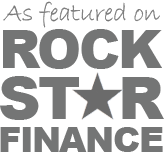Because I had to return on a Sunday and my wife had to stay until Monday for her interview, I left a day before she did. Seattle has a subway that goes to the airport, so she could get to her flight without a car. In the meantime, I would return the car on Sunday and save one day of car rental charges.
Oops.
Our hotel had underground parking and the exit required a pretty tight turn to fit through the gate. Because my wife had been driving all weekend, I had very little experience driving the minivan and ended up misjudging the exit turn. I scraped a pillar on the way out. Crap.When we rented the car, we declined the optional insurance from Dollar. Had we got that, there would not have been a problem. However, we knew our credit card provided rental car insurance coverage, so I declined it to save some money. (You should pretty much always do this - unless you are taking a trip you know will cause vehicle damage.)
 |
| This is one time we knew we were going to need the rental insurance. But that's a story for another day. |
There's A First Time For Everything
This was the first time I ever needed to file an insurance claim for a rental car and here are a few things I learned:- The coverage is secondary. This means you must first file a claim with your own insurance company, find out what they will pay, and then the credit card will pick up whatever isn't covered. (If you do not have your own car insurance, say, for instance, you do not own a car, then the credit card coverage would be primary and cover all damages.) This also means you must pay out whatever is not covered and wait to get reimbursed from the credit card company.
- Your primary insurance probably won't cover everything the rental car company bills you for. The bill I got from Dollar included not just the cost to repair the damage, but also charges for loss of use (the car could not be rented while it was being repaired) and an administrative fee.
- Your deductible still applies, of course. I have a $1,000 deductible, so I was responsible for that much, at least.
- Rental car companies get nasty when trying to collect. I got one letter with my initial bill. I submitted everything to my insurance and they said they would take care of and let me know the status. As with anything involving lots of paperwork, things move slowly and require almost constant follow up. After one month, I got a somewhat nastier letter from Dollar saying I had still not paid and hinted at legal action.
It turns out, my insurance company had approved the claim, but had not done anything with it. After another phone call with my insurance company, I found out there is an electronic system that insurance companies use to pay each other and they were waiting for Dollar to submit the request through that. Another call to Dollar to tell them this. But, they told me, Dollar isn't an insurance company, so they don't have access to that system. Yet another call to my insurance company to get them to mail a check instead.
Oh - did I mention you cannot call the Dollar claims department and speak to someone directly? Every time you call, you get a message saying their representatives are answering calls all day and to leave a message and someone will call you back. The message even says don't call multiple times, it won't make anyone call you back faster. Pretty cheeky.
It's Not Fast
This whole process took two months. It might have gone faster, but I was actually trying to minimize any loss on my part. The last thing I wanted to do was pay out any money and then find out I was not going to get reimbursed for some reason.
When I found out my claim was approved, I gave Dollar the claim number from my insurance company and let them contact the company and work things out. (Given the debacle with the electronic payment thing, that didn't go too well, it seems.) Then, as soon as I found out what my insurance did not pay, and therefore, what I owed, I called my credit card company and got them working on sending that amount to me.
I did not send my payment to Dollar until I had received the credit card payment. So the net effect was I never had to put out any of my own money. But the waiting game I played caused Dollar to send me a second nasty letter after they received payment from my insurance and were still waiting for mine.
Still, It Was No Cost To Me
All in all, it was a fairly painless process that did not cost me any money. My insurance company ended up paying $458.93 and the credit card company paid $1,339.20. It did require about an hour or two of my time just to follow up with all the companies involved and make sure payments were flowing as they should.This was our first car insurance claim in at least 10 years. Because we've been accident free for so long, our insurance company had enrolled us in their accident forgiveness program. We are allowed one at-fault claim every five years without incurring a rate increase. I'm glad we had that.


















